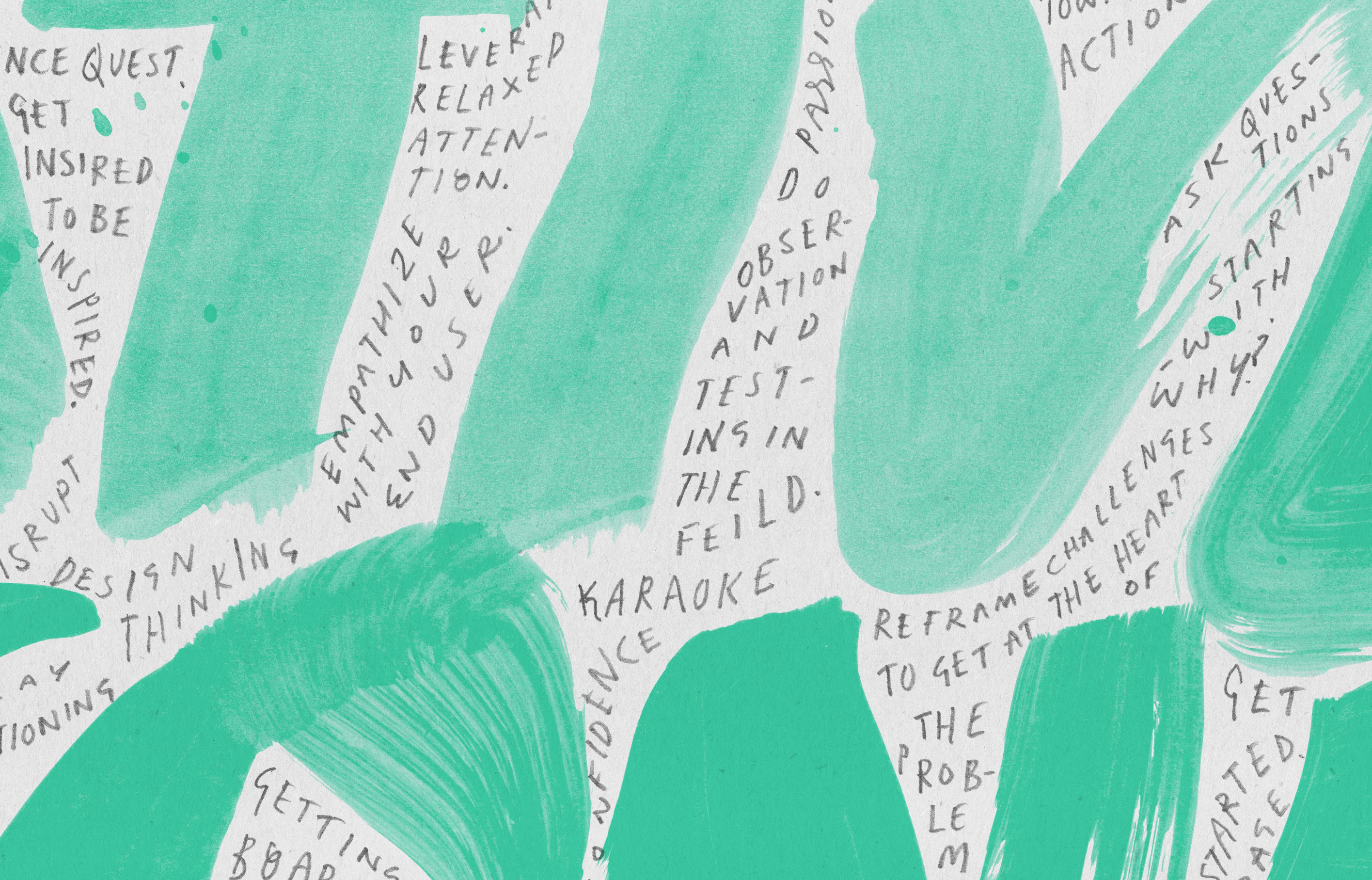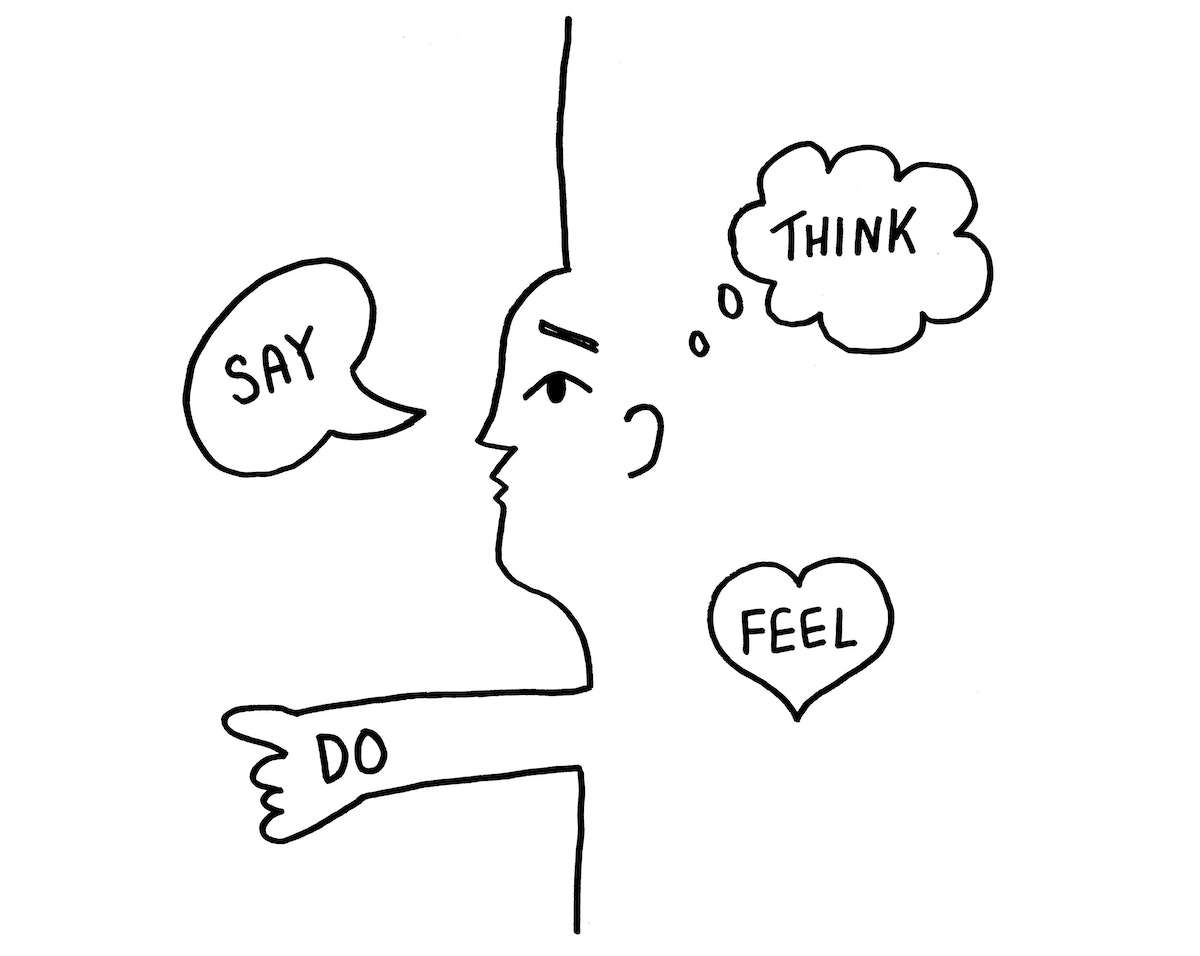Build Your Creative Confidence: Empathy Maps

Everyone is creative. This belief runs through everything we do at IDEO, and in 2013, it led my brother David and me to write a book that would help others—even those who don’t think of themselves as “creative types”—to unleash their creative potential. Creative Confidence has inspired thousands of people to adopt a creative mindset and apply it to the diverse real-world challenges they face. In this series, we’ll share some exercises from the book that can help you approach your challenges from a new perspective.
Creativity Challenge # 4: Lessons from observing human behavior
A fundamental principle of innovation or creative thinking is to start with empathy. On the path from blank page to insight, sometimes people need a tool to help with what comes next: synthesis. You’ve gone into the field in search of knowledge, meeting people on their home turf, watching and listening intently. But synthesizing all that data can be a little daunting.
Take control of your field observations by organizing them with an “empathy map”—a tool inspired by IDEO and further developed at the Stanford d.school.
Tool: Empathy Maps
Participants: Solo or groups of 2-8 people
Time: 30 to 90 minutes
Supplies: Whiteboard or large flipchart, Post-its, and Sharpies

Instructions
Step 1: On a whiteboard or a large flipchart, draw a 4-quadrant map. Label the sections with “say,” “do,” “think,” and “feel,” respectively.
Step 2: Populate the left-hand quadrants with Post-its that capture each of your individual observations—using one Post-it per idea. Place observations of what people do in the lower-left quadrant, and place observations of what people say in the upper-left quadrant. Try color-coding positive things with green Post-its, yellow Post-its for neutral, and pink/red for frustrations, confusion, or pain points. The key is not to record everything, but instead to capture what stands out.
Step 3: When you run out of observations (or room) on the left side, begin to fill the right side with Post-its, inferring what people think in the upper-right quadrant and what they feel in the lower-right quadrant. Pay attention to people’s body language, tone, and choice of words.
Step 4: Take a step back and look at the map as a whole. Try to draw some insights or conclusions from you have just written down, shared, and talked about. These questions serve as a good prompt for a discussion of insights. What seems new or surprising? Are there contradictions or disconnects within or between quadrants? What unexpected patterns appear? What, if any, latent human needs emerge?
Tips from the Field
The key to extracting value from observing human behavior is to come away with real insights. This can be challenging, but the exercise is worth the time and effort. As you build up confidence, ask yourself, “Is this a real insight?” Our advice is to look for takeaways that help you see your topic or subject from a new perspective. Try to come up with several that feel novel. As you spend more time with others exploring your topic or subject, patterns will emerge. Some insights will prove to be more pivotal than others.
This post was taken from Chapter 7 of Creative Confidence. Purchase the book for more on how to use creativity to solve problems.
Words and art

Subscribe

.svg)







